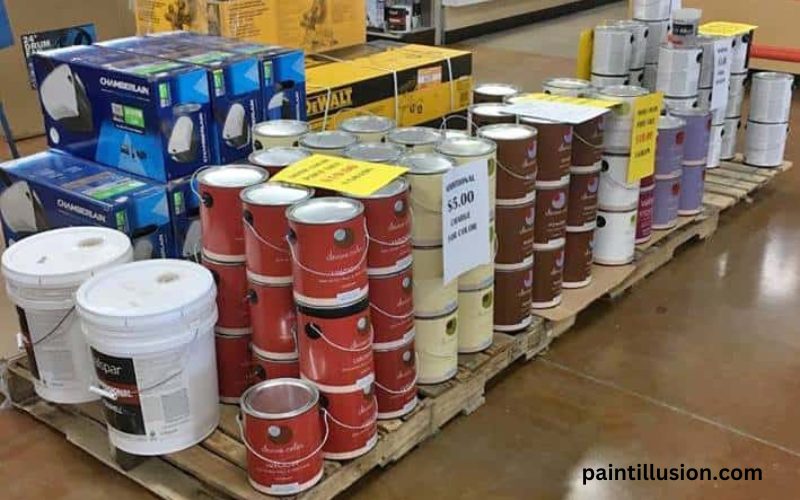Paint is an essential component of any construction or DIY project. Whether you’re repainting a room or working on a large-scale construction project, understanding the weight of paint is crucial for various reasons. In this article, we will explore the factors that affect the weight of paint, how to measure it, and why it matters in construction and DIY projects. If you’ve ever wondered how much 5 gallons of paint weighs, read on to find out!
Introduction to paint weight
When it comes to paint, weight plays a significant role in several aspects of its application and handling. The weight of paint is determined by various factors, including the type of paint, its composition, and the volume of paint being used. Understanding the weight of paint is essential for estimating transportation costs, ensuring structural integrity, and complying with safety regulations.
Factors that affect the weight of paint
Several factors can influence the weight of paint. The primary factor is the type of paint being used. Different types of paint, such as latex, oil-based, or acrylic, have varying densities, which directly impact their weight. Additionally, the composition of the paint, including the ratio of pigments, solvents, and binders, can also affect its weight. Paint with a higher pigment concentration tends to be heavier.
The volume of paint being used is another crucial factor. A gallon of paint generally weighs between 8 to 12 pounds, depending on its type. Therefore, 5 gallons of paint can weigh anywhere from 40 to 60 pounds. It’s important to note that these weights are approximate and can vary based on the factors mentioned earlier.
Understanding the measurement of paint weight
Paint weight is typically measured in pounds or ounces. When purchasing paint, you may come across weight specifications on the product label. This weight includes the weight of the container as well. It’s important to understand whether the weight indicated is for the paint alone or includes the container weight.
The weight of paint can also be measured indirectly by calculating its density. Density refers to the mass of a substance per unit volume. By measuring the volume of paint and multiplying it by its density, you can determine the weight. However, this method requires accurate measurements and knowledge of the paint’s density, which may not always be readily available.

How to calculate the weight of 5 gallons of paint
To calculate the weight of 5 gallons of paint, you first need to determine the weight of one gallon. As mentioned earlier, a gallon of paint typically weighs between 8 to 12 pounds. Let’s assume the average weight of one gallon is 10 pounds for simplicity.
To calculate the weight of 5 gallons, multiply the weight of one gallon by the number of gallons. In this case, 10 pounds multiplied by 5 gallons equals 50 pounds. Therefore, 5 gallons of paint would weigh approximately 50 pounds. Remember that this is an estimation, and the actual weight may vary depending on the type and composition of the paint.
Common types of paint and their average weights
Different types of paint have distinct weights due to variations in their composition and density. Here are some common types of paint and their average weights:
- Latex Paint: Latex paint is one of the most commonly used types of paint. It is water-based and has a relatively low density. On average, a gallon of latex paint weighs around 8 to 10 pounds. Therefore, 5 gallons of latex paint would weigh approximately 40 to 50 pounds.
- Oil-Based Paint: Oil-based paint is known for its durability and glossy finish. It has a higher density compared to latex paint. On average, a gallon of oil-based paint weighs between 10 to 12 pounds. Consequently, 5 gallons of oil-based paint would weigh approximately 50 to 60 pounds.
- Acrylic Paint: Acrylic paint is versatile and commonly used for various applications. It has a similar density to latex paint, with an average weight of 8 to 10 pounds per gallon. Therefore, 5 gallons of acrylic paint would weigh approximately 40 to 50 pounds.
These weights are approximate averages and may vary depending on the specific brand and formulation of the paint.
Tips for handling and transporting heavy paint containers
Handling and transporting heavy paint containers require proper precautions to ensure safety and prevent any accidents or injuries. Here are some tips to keep in mind:
- Use proper lifting techniques: When lifting heavy paint containers, bend your knees, keep your back straight, and use your leg muscles to lift the load. Avoid bending at the waist, as it can strain your back.
- Use appropriate lifting equipment: If the paint container is too heavy to lift manually, consider using lifting equipment such as dollies or hand trucks. These tools can make transportation easier and reduce the risk of injuries.
- Secure the containers: Ensure that the paint containers are tightly sealed to prevent any leaks or spills during transportation. Use appropriate packaging materials, such as bubble wrap or foam, to protect the containers from damage.
- Distribute the weight evenly: If you’re transporting multiple paint containers, distribute the weight evenly across the vehicle or cart. This will help maintain stability and prevent tipping over.
- Follow safety regulations: Familiarize yourself with any local or state regulations regarding the transportation of hazardous materials, as some types of paint may fall under this category. Adhering to these regulations is crucial for safety and legal compliance.
Why paint weight matters in construction and DIY projects
Understanding the weight of paint is essential for construction and DIY projects for several reasons:
- Structural considerations: In construction projects, the weight of paint can affect the structural integrity of surfaces. Applying multiple coats of heavy paint on walls or ceilings can add a significant amount of weight, potentially impacting load-bearing capacities. By estimating the weight of paint, builders and architects can ensure that the structural elements can support the additional load.
- Transportation costs: When purchasing paint in large quantities, such as 5-gallon containers, transportation costs can be substantial. Knowing the weight of paint beforehand allows for accurate estimation of shipping or delivery charges, helping to budget project expenses effectively.
- Safety regulations: Some types of paint, particularly those containing hazardous substances, may be subject to specific safety regulations. Understanding the weight of these paints is crucial for compliance with transportation and storage guidelines to prevent any accidents or environmental hazards.
Other considerations when estimating paint weight
While the weight of paint is an important consideration, it’s not the only factor to keep in mind when estimating paint quantities for a project. Other factors to consider include:
- Coverage area: The coverage area of paint is typically indicated on the product label. Understanding the coverage area per gallon can help estimate the total amount of paint required for a project accurately.
- Surface type: Different surfaces may require varying amounts of paint. Porous surfaces, such as bare wood or rough concrete, tend to absorb more paint compared to smoother surfaces. Taking the surface type into account can prevent underestimating or overestimating paint quantities.
- Paint wastage: It’s common to have some paint wastage during the application process, such as spills, drips, or excess paint left in the container. Accounting for potential wastage can ensure that you have enough paint to complete the project without running out.
FAQs about paint weight
- Is the weight of paint containers included in the total weight? Yes, when the weight of paint is mentioned, it generally includes the weight of the container as well.
- How can I find the weight of a specific paint brand or type? The weight of paint is usually indicated on the product label. If you can’t find the weight information, you can contact the manufacturer or check their website for specifications.
- Does the weight of paint affect its quality or performance? The weight of paint does not necessarily determine its quality or performance. Different types of paint have varying densities, but this does not directly correlate with their effectiveness. It’s important to consider other factors, such as the paint’s composition, coverage, and durability.
Conclusion
The weight of paint plays a crucial role in construction and DIY projects. By understanding the factors that affect paint weight and how to calculate it, you can estimate transportation costs, ensure structural integrity, and comply with safety regulations. Remember to consider other factors, such as coverage area and surface type, when estimating paint quantities for your projects. With this knowledge, you can confidently tackle any painting endeavor, knowing the weight of 5 gallons of paint and its implications. Happy painting!

